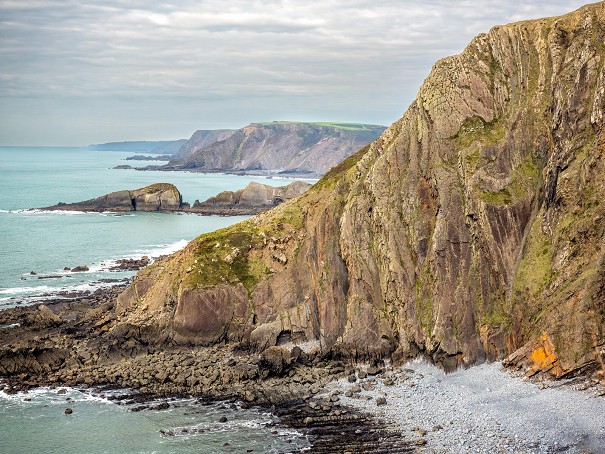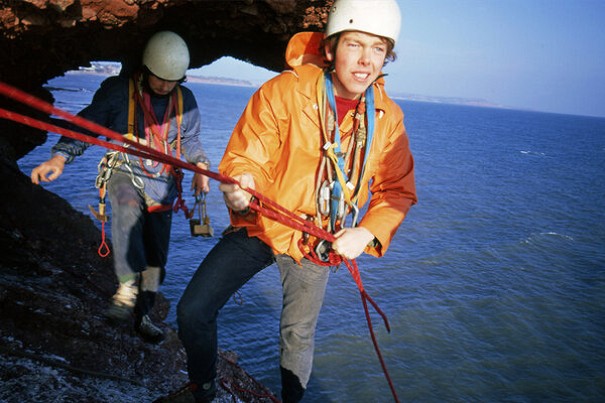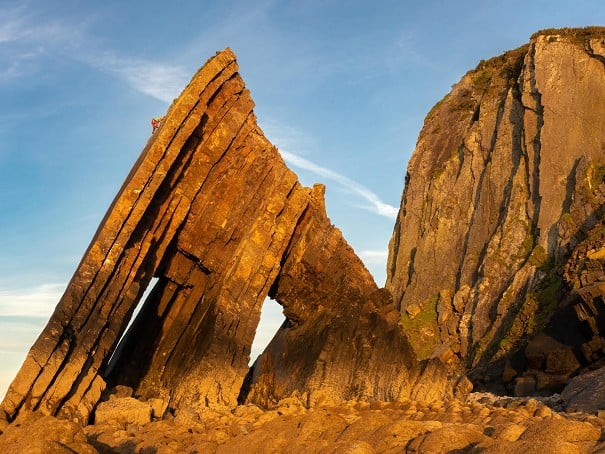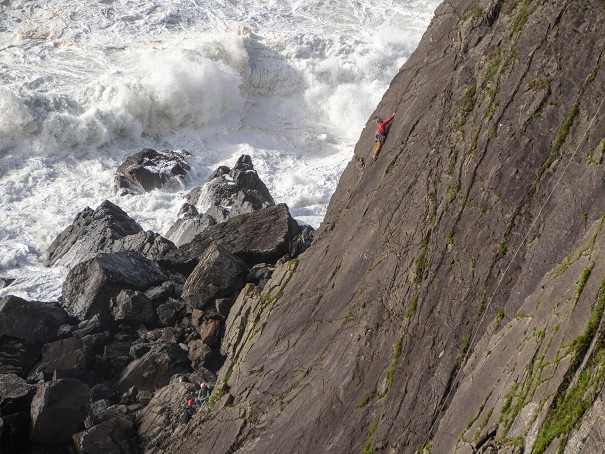
Culm Dancing - Reelin' in the Years (Mid-70's)
It was a chilly Tuesday night in January, 1974 and the windswept streets of Exeter were virtually deserted. Politically, these were tumultuous times. The three-day week had come into force at the start of the month as fuel supplies haemorrhaged due to a combination of the oil crisis and the Government of the day's seemingly perennial dispute with mineworkers.
But this was a night when the lights were on and pubs could open hence my visit to downtown Exeter. I was heading to the Oddfellows, now a trendy gastro-pub but then a traditional hostelry and the weekly meeting place of Exeter Climbing Club. Made up of locals and a contingent of students from Exeter University, this vibrant confluence of town and gown had been the catalyst for many of the new developments on South Devon rock and the wider region in the late 1960s and early 70s.
I had lived in Devon for just over three months. Settling down in a new home and starting a new career on a local newspaper, as well as coming to terms with my Dad's early death, caused me to ditch climbing for a while. As the January days began to lengthen, however, I felt it was time to get back on the rock.
At the Oddfellows, the saloon bar was stuffed with climbers but the first person I spoke to was a tall guy with a shock of brown hair, a broad grin, and what today would be called a 'hipster beard'. His companion was shorter, with blonde hair and a thin face. The tall guy was Keith Darbyshire, whose name was familiar as Pat Littlejohn's partner on top South-West routes such as America, Il Duce and Savage God. His companion was Hugh Clarke, then still a schoolboy, but already a climber of awesome talent. They welcomed this up-country stranger with open arms.
Up to that point, I had climbed mainly in North Wales and the Peak while my sea-cliff experience was confined almost exclusively to routes on the more easily accessible bits of Gogarth. Chatting with these guys, it was soon apparent that my primary level sea-cliff education was about to be broadened. A wilder world of turf bollard belays, see-saw abseils and hair-raising descents to lonely wave-washed ledges awaited, an unheard of level of commitment for a journeyman climber like me.
A few days later, the Exeter team headed to Torbay and Keith urged me to tag along. The talk in the pub had left me unsure what to expect, but my re-acquaintance with the climbing joys of the Devon Riviera (I had done Moonraker a couple of years previously) proved remarkably conventional. A few routes at Meadfoot and Daddyhole provided an amenable introduction to what would be a roller-coaster couple of years.
It was not long before I had the chance to sample Keith's foot-to-the-boards approach to climbing and life in general. The following weekend, I drove up to the Darbyshire family home on the northern fringes of Dartmoor. Keith's souped-up silver minivan then provided a nerve-jangling high-speed journey to Lower Sharpnose. The weather held long enough for us to do Hatchet before the rain turned the rock into an ice-rink. With plenty of daylight remaining, Keith seemed anxious to check out yet more Culm esoterica. We tramped for what seemed like miles through the downpour past Sandy Mouth and The Flame to Menachurch Point, Maer Cliff and Wrangle Point, all of which were virgin territory at the time.
Dave Garner making an early ascent of Lunakhod, Lower Sharpnose
© Dave Garner collection
Keith and his parents moved a few miles further west nearer to Okehampton and, more importantly, closer to the Culm. He started going out with Ali, who lived with her parents in a rambling farmhouse in the nearby hamlet of South Zeal. This homely spot became the regular meeting point for a motley crew of climbers including Pat, Hugh, Steve Jones, Paul Buttrick, Angus Clark and me, along with the inimitable Iain Peters. As the grandson of Keith Lawder, the pioneer of Cornakey's visionary Wrecker's Slab, Iain had Culm in his genes. The farm was also the scene of several memorable parties. With tongue firmly in cheek, we christened our little group the South Zeal Mountaineering Club. It combined climbing with a deep camaraderie, lively debate and merciless piss-taking.
The climbing was never the first adrenalin rush of the day. First you had to survive the car journey. Near misses were legion and Lady Luck did not always smile on us. On one grey Sunday morning we headed out from the farm in convoy en route to the Culm, me in my lumbering Morris Traveller trying desperately to keep pace with Keith. He was about 150 yards in front of me when his minivan hurtled around a left-hand bend. I followed to be greeted a scene of carnage – Keith's vehicle had ploughed into a herd of cattle. His van was undriveable, so after completing the formalities with the nonplussed farmer, we shoehorned everyone into my car and continued to the crag.
Compass Point at Bude with easy access and a sunny aspect was soon a favourite venue. In early 1974, it was pretty much a blank canvas and soon its walls yielded a clutch of routes. The best of them was Crimtyphon and the day we did it was extraordinary even by Keith's Olympian standard of wackiness.
We drove up to Bude the previous evening and had a few beers at our hostelry of choice, the Carriers. We dossed down in a sea-front shelter for the night but I was woken in the early hours by a police dog nuzzling my face and his handler's torch blinding me. The officer was anxious to establish if these two bohemian-looking characters were up to no good. After convincing Devon and Cornwall's finest that we were legit, we were able to snatch some sleep. It was pretty cold though so we were up at first light.
With no food and hours until the café opened, Keith suggested we go climbing. The tide was going out so we hopped over to Compass Point where we did Crimtyphon, swiftly followed by Father Christmas's Nightmare. One an elegant slab, the other a fearsome off-width. The sublime to the ridiculous….
Crimtyphon was relatively uneventful but Father Christmas's Nightmare, without prior inspection, was the polar opposite. These days, you are advised to drop a rope from the top to aid the exit. No such niceties for Keith who seemed to manage to climb the upper section marginally faster than it was collapsing while I cowered below trying to dodge the rubble fusillade. Surprisingly, we completed the ascent unscathed and, covered in dust and debris, were at the café as it opened at 10 am. The café staff were convinced we had been demolishing a building….
Alas, Crimtyphon is not quite the quality route it was having suffered some subsidence a few years ago, while it seems Father Christmas's Nightmare has become even more unstable, if that is possible. Culm's unique geological vulnerability made this a recurring theme.
Almost from the moment I met him, Keith spoke in hushed tones about a line he had been cleaning on the forbidding walls of Blackchurch. He felt it would be a fitting companion to Pat's superb Archtempter just to the right. Cleaning potential routes was advisable on much of Blackchurch and Keith had weaponized the activity. Favourite among his armoury of cleaning tools was his 'daisy-grubber', a fearsome trenching tool. Like most of the implements he employed, it resulted from a raid on his Dad's tool-shed. Keith recruited me for some of these sessions but it was far from all work and no play. The tidal sea stack of Blackchurch Rock provided a welcome climbing break and we ticked off Notre Dame, the rock's airy right arête, during our cleaning downtime. We could hardly ignore the striking line of discontinuous thin cracks up the Rock's slabby front face – a chance to continue the Parisian ecclesiastical building theme perhaps?
Back on the main cliff, the big line's principal feature was a soaring off-width and, as this was long before the advent of the mega-cams, it promised to be sparsely protected. Keith's solution was to supersize the chockstoning sorcery of Brown and Moseley. Instead of the pebbles carried in a woolly hat favoured by the Rock and Ice's finest, Keith selected two sea-washed volleyball sized boulders from the beach at Mouth Mill to protect the hard bits. With the boulders in an old rucksack and a roguish grin on his face, he abbed down the line armed with a mallet to hammer them into position.
Three shots of Keith Darbyshire attempting the first ascent of Sacre Coeur.
© Hugh Clarke
Keith, Hugh and I arrived at Blackchurch one bright but bracing morning in May, intent on doing battle with the big line. Pat, who had transport problems, was hoping to join us later. The main cliff felt uninviting in the morning chill, so we switched our attention to the thin crack line up Blackchurch Rock's sweeping front face. This was pre-chalk, sticky boots and microcams but Keith managed two-thirds of it before grinding to a halt having exhausted both his meagre selection of wires and his calves. He barely had time to lower to the deck before a familiar figure came striding across the boulder beach. Pat had resolved his transport impasse by borrowing his Grandad's moped and trundling up the 50-odd miles from Exeter.
Pat Littlejohn, Sacre Coeur first ascent
© Dave Garner
He quickly tied on and duly completed Sacre Coeur, one of this coast's enduring classics. Failure on Sacre Coeur made Keith more determined than ever to do battle with the big main cliff line. Phenomenally strong thanks to his job as a thatcher and with endurance to match, he cruised it making light of the lack of protection. There was, however, a brief moment of hesitation. On reaching one of the chockstones -- he discovered that he had placed it in such a position that you needed to be a contortionist to thread it. As the route had been literally dug out of the cliff, he named it The Sexton.
It was a great end to an outstanding day and Keith was stoked. We loaded Pat's moped into the back of my car to give him a lift back to Exeter.
Cleaning lines at Blackchurch did not always produce the anticipated gems. Keith and I put in a few shifts excavating the crack line of Barabbas. After climbing it, we convinced ourselves it was a corker. We even gave it an optimistic VS grade, though as the handful of subsequent ascensionists have discovered, it is anything but on both counts.
In the mid-70s, as long as you kept a low profile, you could drive down to Mouth Mill making Blackchurch almost a roadside attraction. After completing Barabbas, we walked back to the car to discover a swish Range Rover had appeared nearby. We had neither seen nor heard any other climbers on the main cliff and the incoming tide was already encircling the Rock. As we scanned the foreshore, suddenly a figure appeared from the waves. It was a middle-aged woman who strode languidly up the beach like Ursula Andress in Dr. No but, unlike Ursula, she was naked. Apparently unconcerned that she now had an audience, the skinny-dipper slowly dressed and as she climbed into her car, greeted us with a cheery 'Good afternoon!' in a seriously cut-glass accent. There's rarely a dull moment on the Culm….
That spring, the Culm or the Atlantic coast was our focus. Keith and I had some great adventures on the latter, generally breaking new ground though our early repeat of Eroica was one of my most abiding memories. Occasionally, however, the weather was so atrocious on the north coast that we were forced to seek the shelter of Torbay or Chudleigh. As the evenings grew longer, Keith realised he could get to the Culm after work and would round up an unsuspecting second to accompany him. I worked in Newton Abbot and lived in a flat in converted outbuildings at a farm near Bovey Tracey, so getting to the Culm on an evening was pushing it. But from time to time, Keith did opt for Dartmoor granite for his evening kicks. The enigmatic Widecombe Wall dates from this period.
With his boundless enthusiasm and Micawberish approach to climbing on unstable ground, Keith made an epic attempt on Culm's most daunting precipice, Henna Cliff; and an even more epic abseil retreat from a crumbling pinnacle at 150 feet. His line would become Breakaway when Mick Fowler applied some cunning lateral thinking to complete the route five years later.
In contrast, the slabs of Brownspear Point appeared agreeably benign. We headed there with Hugh Clarke in early summer. After doing Duncan Finlayson's excellent Main Sail, we turned our attention to the expanse of slab to its left.
A curious overlapping arch-like feature known as the Hatchway guarded the entry. Keith finessed a marginal peg runner just above the overlap and headed up the slab. Our optimism that the rock would be as trustworthy as on Main Sail proved misplaced as pretty well all the holds were eminently disposable.
Undeterred, Keith pressed on with just the odd decorative runner until, at about 90 feet, he was able to place a second peg so iffy that I later pulled it out by hand. It was another 40 feet to the stance and, while the technical difficulty was not high, the chances of a ground fall were. Berlin fully merited Iain Peters' inspired summation of its dubious qualities in the 1988 guide: "The holds resemble loosely-packed playing cards and should be left unshuffled."
Nobody passed this advice to the gravity gods because some years later, the entire slab slid down to the beach and Berlin and Main Sail along with several others were no more.
In those days, our little band seemed to have the Culm cliffs to itself. I can only recall encountering another party once. Paul Buttrick and I followed Pete Biven and Al Alvarez up The Almighty at Blackchurch. It was surreal chatting to Al on the first stance, just a few feet from Savage God; the route named after one of his greatest books. Sadly, neither Al nor Pete are still with us and, thanks to a further bout of Culm instability some years later, nor is that stance.
From time to time, Keith had regaled us with the tale of Pat's spooky overnight stay in the old summerhouse on top of the cliff. We decided to check it out for ourselves but concluded that safety in numbers was the best way of keeping the ghouls at bay.
We decided that some Dutch courage was required so four or five of us spent the evening at a quayside pub in Clovelly. At closing time, we staggered back up the hill to the car park at the top of the village, and drove back to Mouth Mill. The prospect of yet another uphill slog, this time encumbered with sleeping gear, didn't appeal, so I drove up the rough overgrown track to the summerhouse. After more beer, everyone was well anaesthetised and blissfully ignorant of any nocturnal ghostly activity.
The next day, only Keith and Paul were in a fit state to climb and they duly completed The Verger, Blackchurch's finest and most exciting mid-grade adventure route. The rest of the team were suffering the mother of all hangovers, mine made worse by the discovery that the previous night's tyre tracks passed just a few feet from the precipice.
Not long after this, Keith was struck down by illness which kept him off the rock for several months. Culm exploration lost momentum as we diverted our attention to alternative venues such as North Pembrokeshire and Cheddar. But in late October, a team set out to make the first inroads at Dyer's Lookout. Pat reconnoitred the imposing wall on the right of the cliff while Steve Jones cleaned a line based on a bow-shaped flake to the left. Steve attempted the line but took a sweeping 30ft fall before handing over the lead to Pat. They completed Earth-Rim Roamer which was to collapse within two years. But the potential of the cliff had been established and the big wall became the canvas on which in ensuing decades Pat, Nick White, Ian Vickers, James Pearson and Dave Birkett would sketch a series of routes of progressively more mind-boggling difficulty.
In January 1975, Keith put up Caravanserai at Compass Point to herald his return to rude health. The following month, BBC Plymouth who had got wind of the exploits of the climbing thatcher, sent a camera crew to Compass Point to film him in action on The Entertainer with a mortified Iain Peters in tow. It was to be Keith's swansong.
A Monday evening two weeks later, a telephone rings in the farmhouse next door to my flat. I heard it and, somehow, I knew it was for me. Moments later, there was a knock on my door. It was Mrs Scott, my landlady, who said: "Someone needs to speak to you…" The news was stark: Keith was missing. While exploring Nare Head in south Cornwall, Keith had fallen in the sea and been swept away. An extensive search by the lifeboat and coastguard, and, later by a group of us in a borrowed zodiac, failed to find him. This was just 13 months after that night in the Oddfellows.
We had lost our inspirational talisman and without his limitless enthusiasm, the pace of exploration inevitably slowed. Climbing on the Culm entered a period of consolidation. Subconsciously, we were content to allow other objectives on Lundy, Cheddar or Pembrokeshire to exert a stronger pull. It was Iain Peters and Paul Buttrick who got things moving again in the autumn. Paul was bitten once more by the cleaning bug and spent many hours preparing a new line up the highest part of Blackchurch. We recruited Pat to do the honours at the sharp end on the resulting Antichrist.
The following year, Pat and I focused our attention on Torbay, Dartmoor and West Penwith. He had moved up to the Bristol area and I was about to start a new job in Yorkshire. Of the original members of the SZMC, only Iain and Paul were still based in Devon and, towards the end of the decade, they gradually re-energised Culm exploration. But it would need the forensic approach of the great Pete O'Sullivan aided by a talented group of climbers from Plymouth to trigger the next chapter of this remarkable area's evolution.
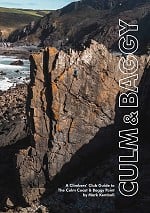
For more information visit The Climbers' Club website.

































